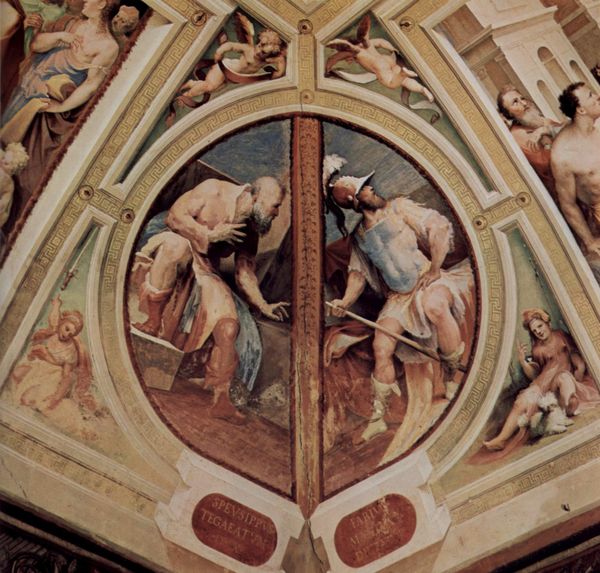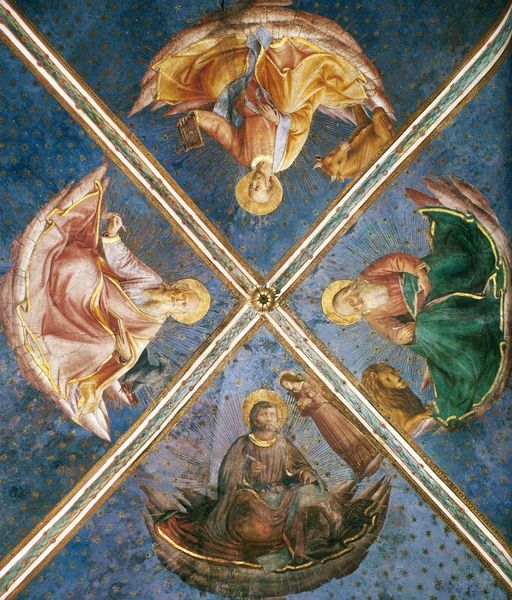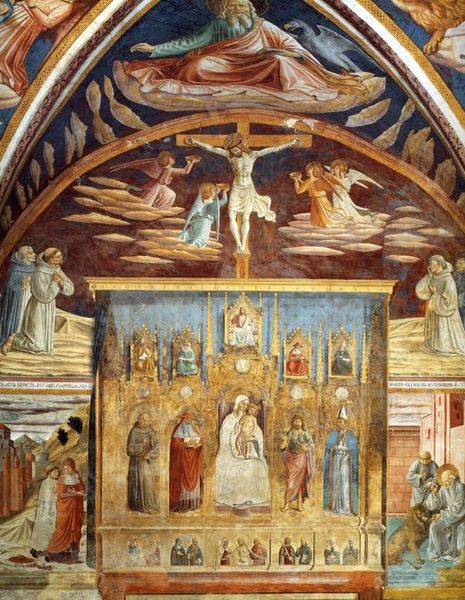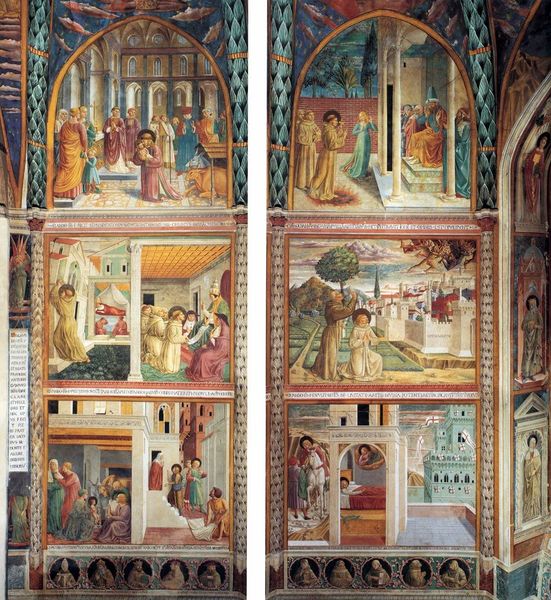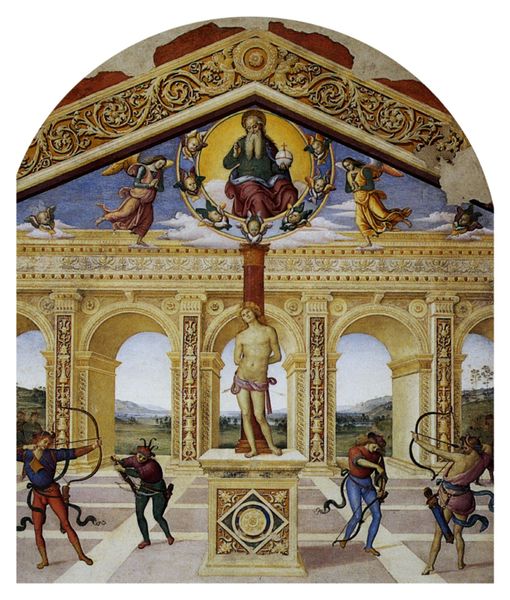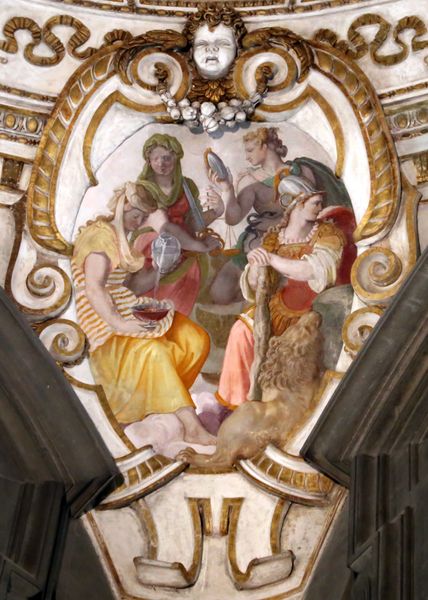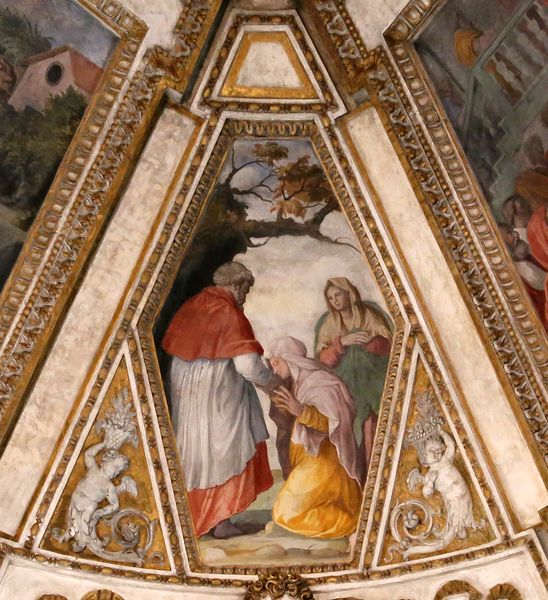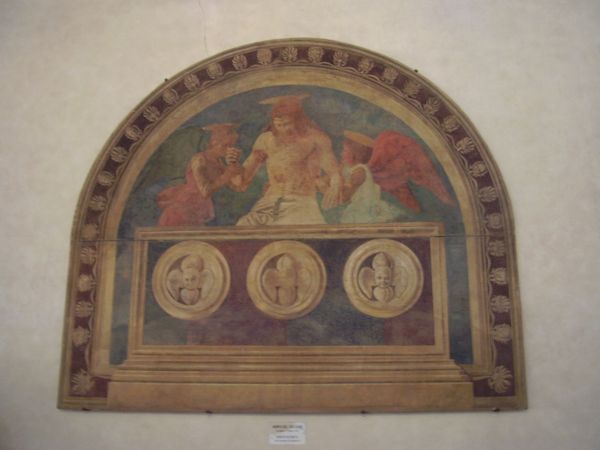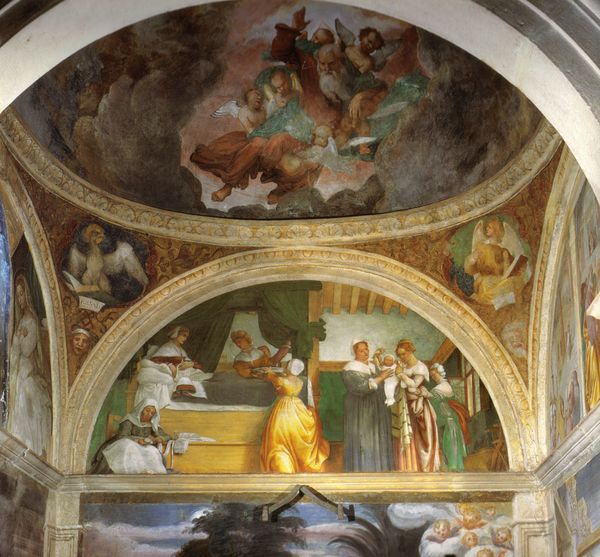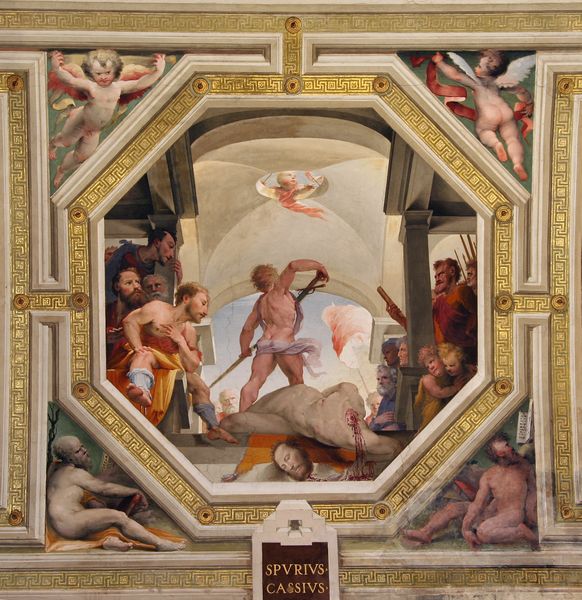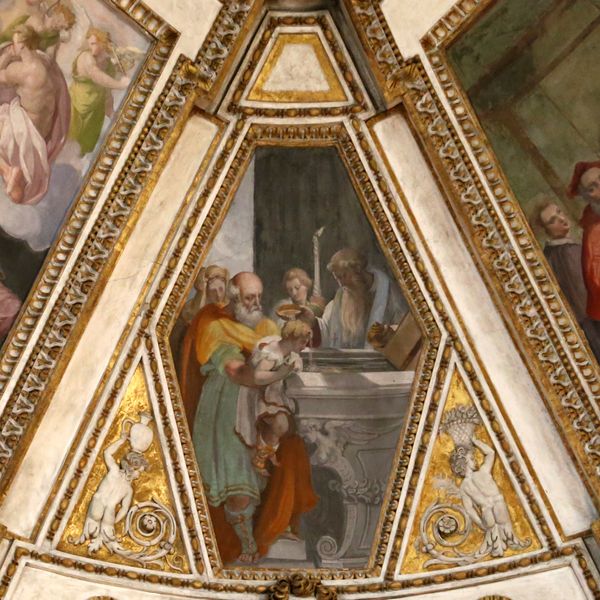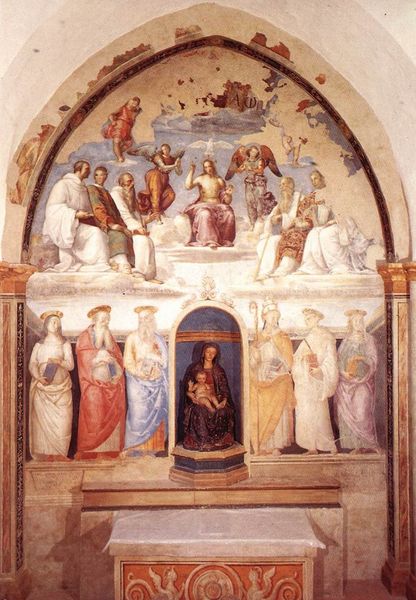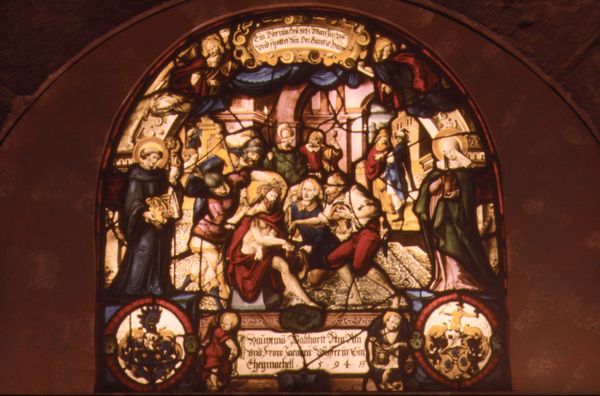
painting, fresco
#
portrait
#
high-renaissance
#
painting
#
sculpture
#
figuration
#
historic architecture
#
fresco
#
traditional architecture
#
history-painting
#
italian-renaissance
Copyright: Public domain
Editor: This fresco, "Carundas Von Tiro Und Celius Praetor" created around 1535 by Domenico Beccafumi, has an unusual composition with these two figures in separate roundels, surrounded by other painted figures and decorations. It almost has the feeling of looking at two sides of a coin. How would you interpret this work, especially regarding its materiality and production in this era? Curator: Considering Beccafumi's "Carundas Von Tiro Und Celius Praetor" through a materialist lens invites us to consider the socio-economic implications inherent in its creation. Fresco, as a medium, necessitates collaboration: pigment grinders, plasterers, and the artist themselves all participating in a complex system of labour. What can this process, reliant on specific materials like lime and earth pigments sourced and processed by often unacknowledged hands, tell us about the power dynamics within the art world of the time? Editor: So, the value lies not only in the final image but also in acknowledging the many steps and workers involved. But is this an intentional commentary, or simply a reflection of artistic production? Curator: It's likely both! Beccafumi wouldn’t have been oblivious to the logistical network that fueled his creativity. Examining the fresco allows us to unpack the relationships between artist, patron, and the anonymous artisans whose skills enabled the very possibility of such a work. It encourages us to investigate how those layers of materiality intersect with class, commerce, and even individual expressions of artistry, challenging simplistic notions about artistic genius. Editor: I never thought about a Renaissance painting in terms of production. Now, thinking about all these contributions and resources certainly gives me a new appreciation. Curator: Indeed! Looking beyond simply aesthetic qualities allows us to view the artwork as the product of myriad relationships and to reflect on artistic creation in society, then and now.
Comments
No comments
Be the first to comment and join the conversation on the ultimate creative platform.
